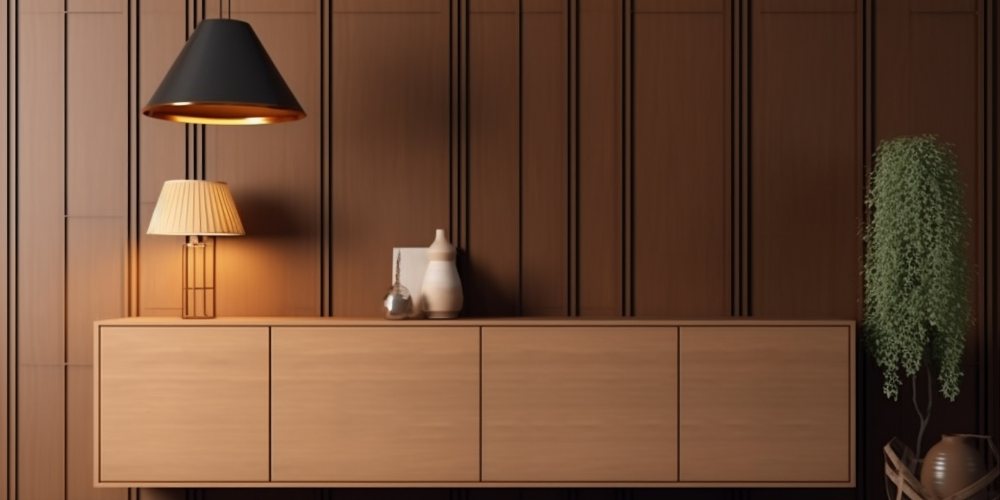Living, learning, working, connecting and creating, are all everyday elements of our ecosystem assisted by man-made environments. Interiors that surround us have a big impact on our functioning.
For millennia, Feng Shui, the ancient Chinese practice, has emphasized on designing interiors that promote a balanced flow of energy. This concept resonates with many modern interior design firms like us that believe that the shape of a room, the materials used in furniture, the colors adorning the walls, and even the organization of books can all influence the way we feel and function in a space.
In 2019, the Johns Hopkins University School of Medicine’s Brain Science Institute pushed the boundaries by showcasing the emerging field of neuroaesthetics at a major international furniture fair in Milan. Their exhibit, titled “Space and Being,” was a first-of-its-kind demonstration of this field on a global design stage. Visitors donned special wristbands that tracked their physiological responses as they explored three distinct room designs. This innovative approach provided scientific evidence for the long-held belief that interior design and furniture choices can significantly impact our mental state.
So to delve more into the connection of Interior Design and your Mind, keep reading forward!
Interior Designing based on Psychology
Understanding how our brains respond to spatial elements allows interior designers to craft spaces that nurture the desired emotions and behaviors. Below is a list of several major elements of Interior Designing that actually have the ability to influence our brain and subconscious.

Colour Psychology
Studies have shown a clear link between colour and mood. A prominent example comes from a study published in the journal “Perceptual and Motor Skills.” This research found that participants exposed to a blue environment reported feeling calmer and more focused, compared to those in a red environment who exhibited signs of increased alertness and arousal. Understanding these associations allows interior designers to create targeted atmospheres.
Soft blues and greens, linked to feelings of tranquility, can promote relaxation in bedrooms, potentially lowering stress levels. On the other hand, yellow or orange are associated with energy and optimism, and can be strategically used in home office settings to boost creativity and focus. By understanding the power of color psychology, interior design can go beyond aesthetics, actively shaping our headspace, responses and experiences within a space.

Lighting Matters!
Not just in workspaces, Ventilation places an important role in almost all the interior designing spaces be it Office Interiors or Home Designing or others.
Lighting plays a crucial role in regulating our circadian rhythm, the internal clock that governs sleep and wakefulness. One study found that employees with access to natural light in their workplaces experienced a 23% increase in productivity compared to those with limited natural light exposure. Therefore, natural light not only brightens a space but also elevates mood and cognitive function.
Artificial light can be a valuable component as well, but its color temperature significantly impacts how it affects us. Cool-toned lights, with a higher Kelvin temperature (think bright white), mimic natural daylight and promote alertness. This makes them ideal for workspaces like home offices or kitchens. Conversely, warm-toned lights with a lower Kelvin temperature (think soft yellow), emit a calming glow that suppresses melatonin production, making them perfect for relaxation areas like living rooms and bedrooms.
Point being, the interiors should be well designed in terms of Lighting- both in terms of Natural & Artificial Lighting, to enhance one’s state of mind.

Biophilia in Design
Our inherent connection to the natural world runs deep. This isn’t just about aesthetics; research shows that biophilic design has a profound impact on our well-being. Studies by the Human Spaces organization, a research group focused on workplace design, revealed that employees in offices with integrated plants reported a 15% increase in well-being and a 6% rise in creativity. Apart from Stress Reduction, the restorative power of nature extends to cognitive function. Incorporating biophilic elements in classrooms or study areas can enhance learning and concentration.
Moreover, Nature isn’t just calming, it can also uplift our spirits. Biophilic design principles can recreate these positive feelings within our homes and workplaces. It goes beyond simply placing a few houseplants in a corner. It’s about strategically incorporating natural elements like Live Plants, Natural Raw Materials, Water Features, Nature-Inspired Patterns, etc.
By adding biophilic elements into the design, interior designers can create spaces that not only look beautiful but also nurture our well-being, fostering a sense of calm, focus, and a reconnection with the natural world.
Conclusion
We at Lavish Interiors have always believed that our homes and workplaces are more than just physical spaces; they are extensions and a reflection of ourselves. By understanding the power of interior design psychology and its influence on our brains, we can transform these environments into such spaces that not only look good but also nurture our well-being.
From the calming serenity of biophilic design to the focused energy of strategic lighting, each element plays a role in shaping our mindset, and thought process in its own unique way.
For any more queries, feel free to connect with us!











